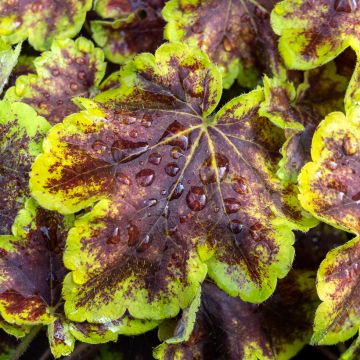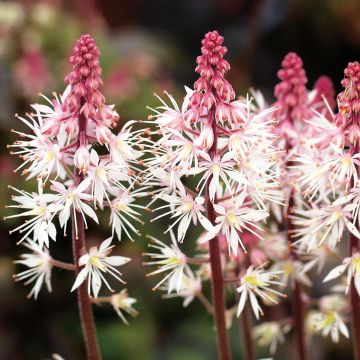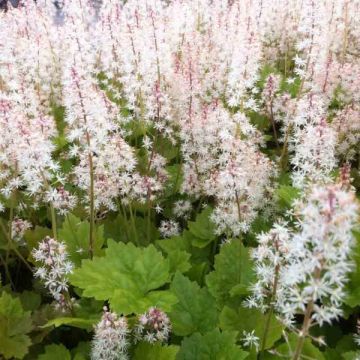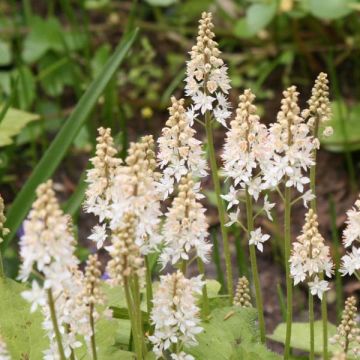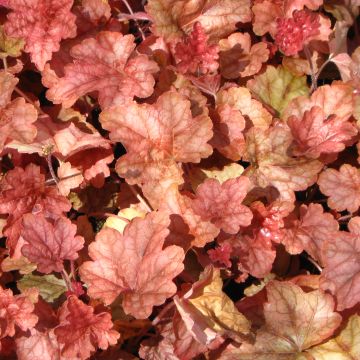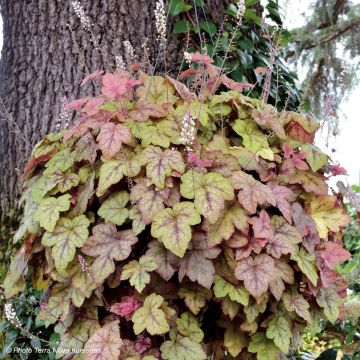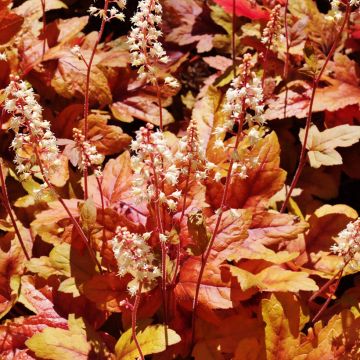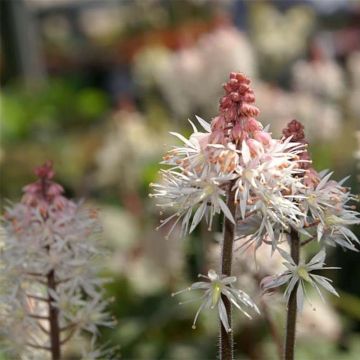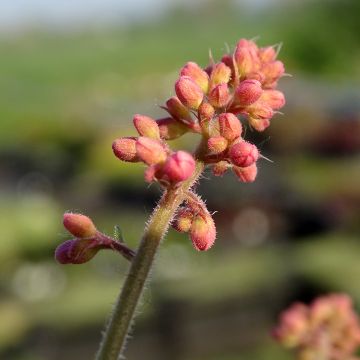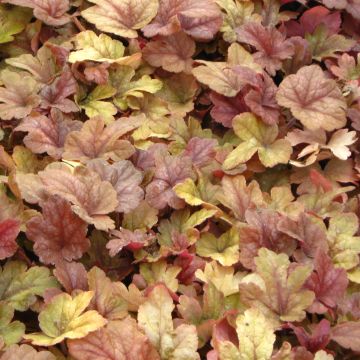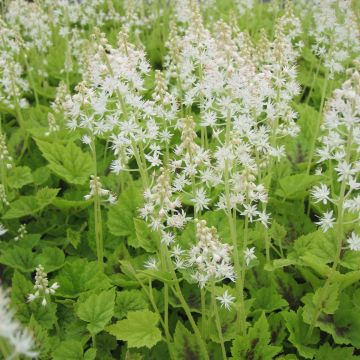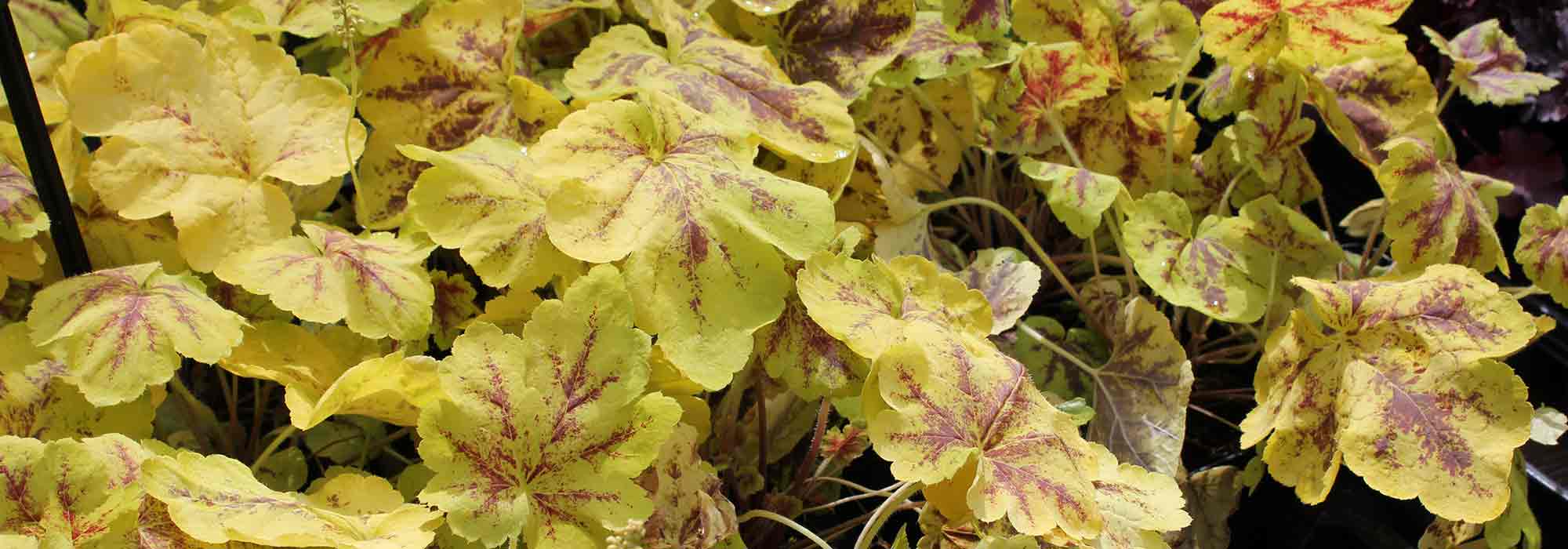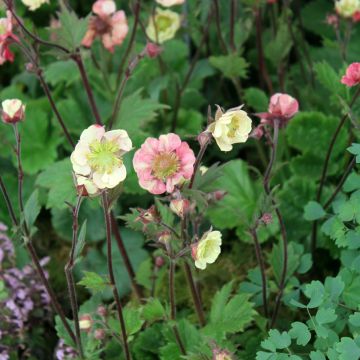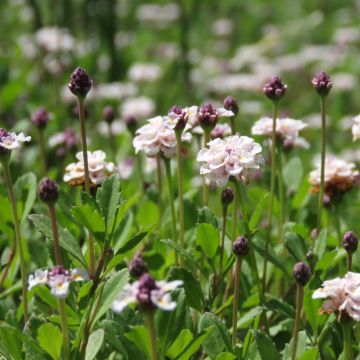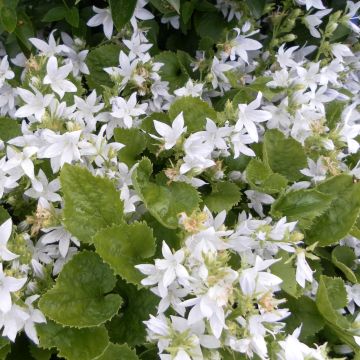

Heucherella Cracked Ice


Heucherella Cracked Ice


Heucherella Cracked Ice


Heucherella Cracked Ice
Heucherella Cracked Ice
(x) Heucherella Cracked Ice
Foamy Bells
This heuchera is located in my parents' garden, a cottage garden with flowers in all seasons!
Pomme, 14/04/2023
Special offer!
Receive a €20 voucher for any order over €90 (excluding delivery costs, credit notes, and plastic-free options)!
1- Add your favorite plants to your cart.
2- Once you have reached €90, confirm your order (you can even choose the delivery date!).
3- As soon as your order is shipped, you will receive an email containing your voucher code, valid for 3 months (90 days).
Your voucher is unique and can only be used once, for any order with a minimum value of €20, excluding delivery costs.
Can be combined with other current offers, non-divisible and non-refundable.
Why not try an alternative variety in stock?
View all →This plant carries a 12 months recovery warranty
More information
We guarantee the quality of our plants for a full growing cycle, and will replace at our expense any plant that fails to recover under normal climatic and planting conditions.
Would this plant suit my garden?
Set up your Plantfit profile →
Description
Heucherella 'Cracked Ice' is a hybrid between Heuchera and Tiarella, combining the best of both parents in a highly successful variety. This recent selection forms a low, evergreen cushion of deeply lobed leaves, with a frosty blue-green colour, veined with dark purple. In autumn, it takes on a delightful silver-pink tone, which is truly fascinating. Its delicate and abundant spring flowering consists of panicles of white flowers carried on slender stems. This vigorous, compact, healthy, and easy-to-grow variety is an excellent perennial for shaded and cool areas of the garden or in undergrowth.
Heucherella 'Cracked Ice' belongs, like its ancestors Heuchera and Tiarella, to the Saxifragaceae family. It has inherited the qualities of these two plants: the spectacular foliage of the Heuchera and the abundant flowering and superior robustness of the Tiarella. 'Cracked Ice' was obtained by Terra Nova, a North American nursery specialising in the creation of new cultivars of Heuchera, Heucherella, and Tiarella, with increasingly surprising colours and remarkable vigour.
It is a perennial plant that forms a low and compact clump. At maturity, it reaches about 20 cm (8 in) in height and 40 cm (16 in) in spread. The leaves measure 4 to 10 cm (2 to 4 in) in diameter. The first leaves, which emerge in spring, are narrower. They give way to large, rather round and deeply palmate leaves that resemble those of a maple, with a silvery green-blue colour and strongly marked veins coloured in dark purple. With the arrival of cold weather, 'Cracked Ice' takes on a soft and luminous silver-pink colour. The very long-lasting flowers appear in April-May and last until the beginning of summer, grouped in condensed spikes carried on thin and hairy stems about 50 cm (20 in) tall. These white flowers have a foam-like appearance.
Heucherella 'Cracked Ice' appreciates wooded environments with a humid atmosphere. It will naturally find its place in moist woodland alongside ferns, Impatiens balfouri, Solomon's seals, and astilbes. It is also a good plant for perennial borders or in a rockery, always in shade. It can also be used as a waterside plant. It will also thrive in containers or sheltered planters away from direct sunlight. In this case, it should be planted in a well-drained potting mix without excess fertiliser, with watering carefully monitored in summer and reduced in winter. Pots will need protection against cold winter winds.
Heucherella Cracked Ice in pictures






Flowering
Foliage
Plant habit
Botanical data
(x) Heucherella
Cracked Ice
Saxifragaceae
Foamy Bells
Cultivar or hybrid
Other Tiarellas and Heucherellas
View all →Planting and care
Easy to maintain, Heucherella 'Cracked Ice' thrives in all types of moist to wet, well-drained, neutral to acidic soils. It can be planted in partial shade or dense shade (although the foliage colour may be less vibrant). It is essential to avoid full sun. You should plant it in loose soil that retains moisture, and consider using mulch. It does not tolerate very hot conditions and prefers high humidity. Once established, this perennial seems to tolerate dry shade under trees and bushes. It requires minimal maintenance and pruning is not necessary except for damaged foliage or rejuvenation.
Planting period
Intended location
Care
Planting & care advice
-
, onOrder confirmed
Reply from on Promesse de fleurs
Similar products
Haven't found what you were looking for?
Hardiness is the lowest winter temperature a plant can endure without suffering serious damage or even dying. However, hardiness is affected by location (a sheltered area, such as a patio), protection (winter cover) and soil type (hardiness is improved by well-drained soil).

Photo Sharing Terms & Conditions
In order to encourage gardeners to interact and share their experiences, Promesse de fleurs offers various media enabling content to be uploaded onto its Site - in particular via the ‘Photo sharing’ module.
The User agrees to refrain from:
- Posting any content that is illegal, prejudicial, insulting, racist, inciteful to hatred, revisionist, contrary to public decency, that infringes on privacy or on the privacy rights of third parties, in particular the publicity rights of persons and goods, intellectual property rights, or the right to privacy.
- Submitting content on behalf of a third party;
- Impersonate the identity of a third party and/or publish any personal information about a third party;
In general, the User undertakes to refrain from any unethical behaviour.
All Content (in particular text, comments, files, images, photos, videos, creative works, etc.), which may be subject to property or intellectual property rights, image or other private rights, shall remain the property of the User, subject to the limited rights granted by the terms of the licence granted by Promesse de fleurs as stated below. Users are at liberty to publish or not to publish such Content on the Site, notably via the ‘Photo Sharing’ facility, and accept that this Content shall be made public and freely accessible, notably on the Internet.
Users further acknowledge, undertake to have ,and guarantee that they hold all necessary rights and permissions to publish such material on the Site, in particular with regard to the legislation in force pertaining to any privacy, property, intellectual property, image, or contractual rights, or rights of any other nature. By publishing such Content on the Site, Users acknowledge accepting full liability as publishers of the Content within the meaning of the law, and grant Promesse de fleurs, free of charge, an inclusive, worldwide licence for the said Content for the entire duration of its publication, including all reproduction, representation, up/downloading, displaying, performing, transmission, and storage rights.
Users also grant permission for their name to be linked to the Content and accept that this link may not always be made available.
By engaging in posting material, Users consent to their Content becoming automatically accessible on the Internet, in particular on other sites and/or blogs and/or web pages of the Promesse de fleurs site, including in particular social pages and the Promesse de fleurs catalogue.
Users may secure the removal of entrusted content free of charge by issuing a simple request via our contact form.
The flowering period indicated on our website applies to countries and regions located in USDA zone 8 (France, the United Kingdom, Ireland, the Netherlands, etc.)
It will vary according to where you live:
- In zones 9 to 10 (Italy, Spain, Greece, etc.), flowering will occur about 2 to 4 weeks earlier.
- In zones 6 to 7 (Germany, Poland, Slovenia, and lower mountainous regions), flowering will be delayed by 2 to 3 weeks.
- In zone 5 (Central Europe, Scandinavia), blooming will be delayed by 3 to 5 weeks.
In temperate climates, pruning of spring-flowering shrubs (forsythia, spireas, etc.) should be done just after flowering.
Pruning of summer-flowering shrubs (Indian Lilac, Perovskia, etc.) can be done in winter or spring.
In cold regions as well as with frost-sensitive plants, avoid pruning too early when severe frosts may still occur.
The planting period indicated on our website applies to countries and regions located in USDA zone 8 (France, United Kingdom, Ireland, Netherlands).
It will vary according to where you live:
- In Mediterranean zones (Marseille, Madrid, Milan, etc.), autumn and winter are the best planting periods.
- In continental zones (Strasbourg, Munich, Vienna, etc.), delay planting by 2 to 3 weeks in spring and bring it forward by 2 to 4 weeks in autumn.
- In mountainous regions (the Alps, Pyrenees, Carpathians, etc.), it is best to plant in late spring (May-June) or late summer (August-September).
The harvesting period indicated on our website applies to countries and regions in USDA zone 8 (France, England, Ireland, the Netherlands).
In colder areas (Scandinavia, Poland, Austria...) fruit and vegetable harvests are likely to be delayed by 3-4 weeks.
In warmer areas (Italy, Spain, Greece, etc.), harvesting will probably take place earlier, depending on weather conditions.
The sowing periods indicated on our website apply to countries and regions within USDA Zone 8 (France, UK, Ireland, Netherlands).
In colder areas (Scandinavia, Poland, Austria...), delay any outdoor sowing by 3-4 weeks, or sow under glass.
In warmer climes (Italy, Spain, Greece, etc.), bring outdoor sowing forward by a few weeks.































